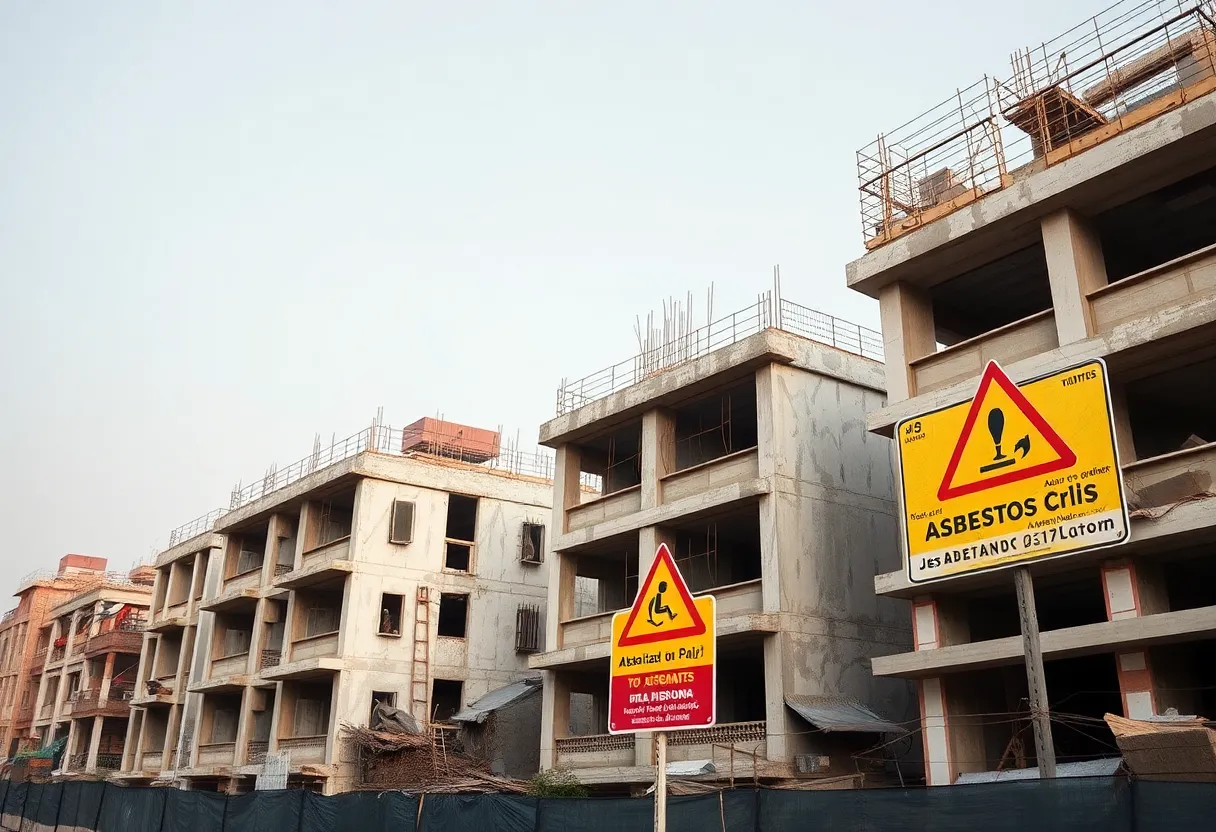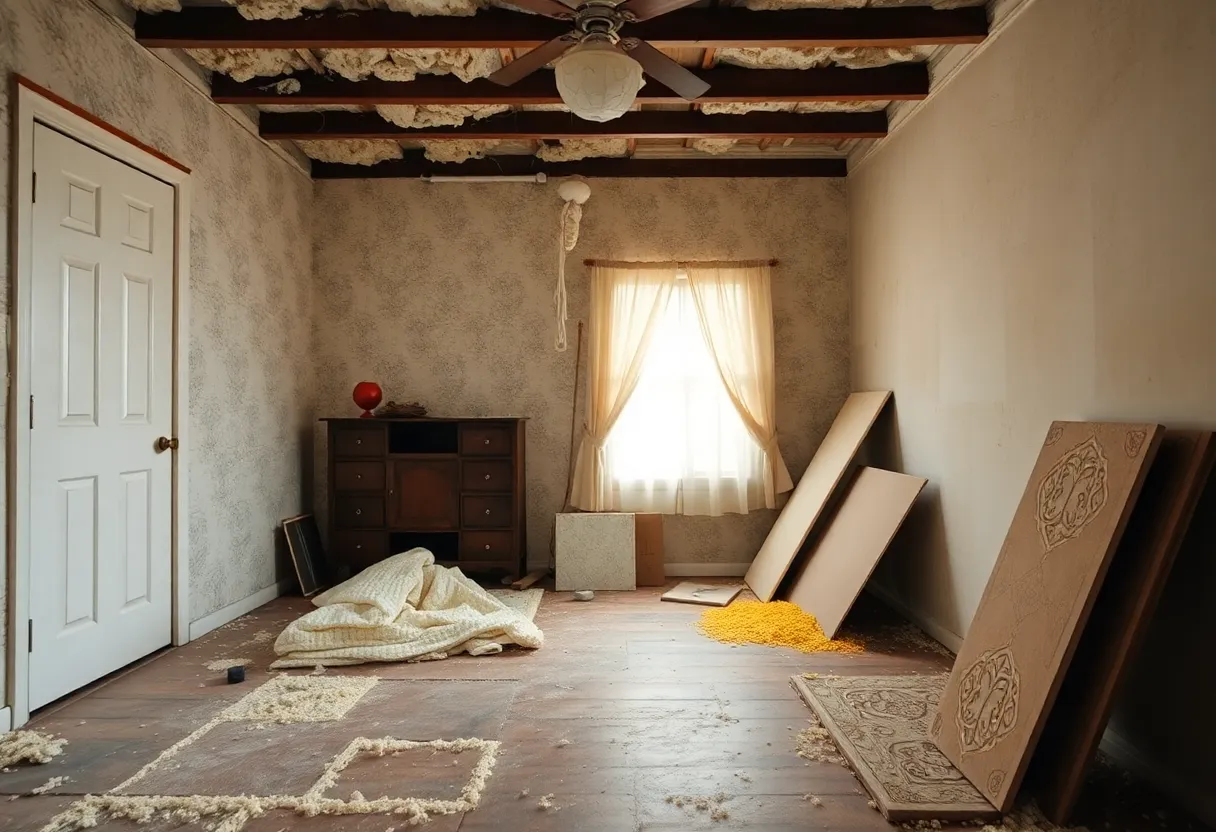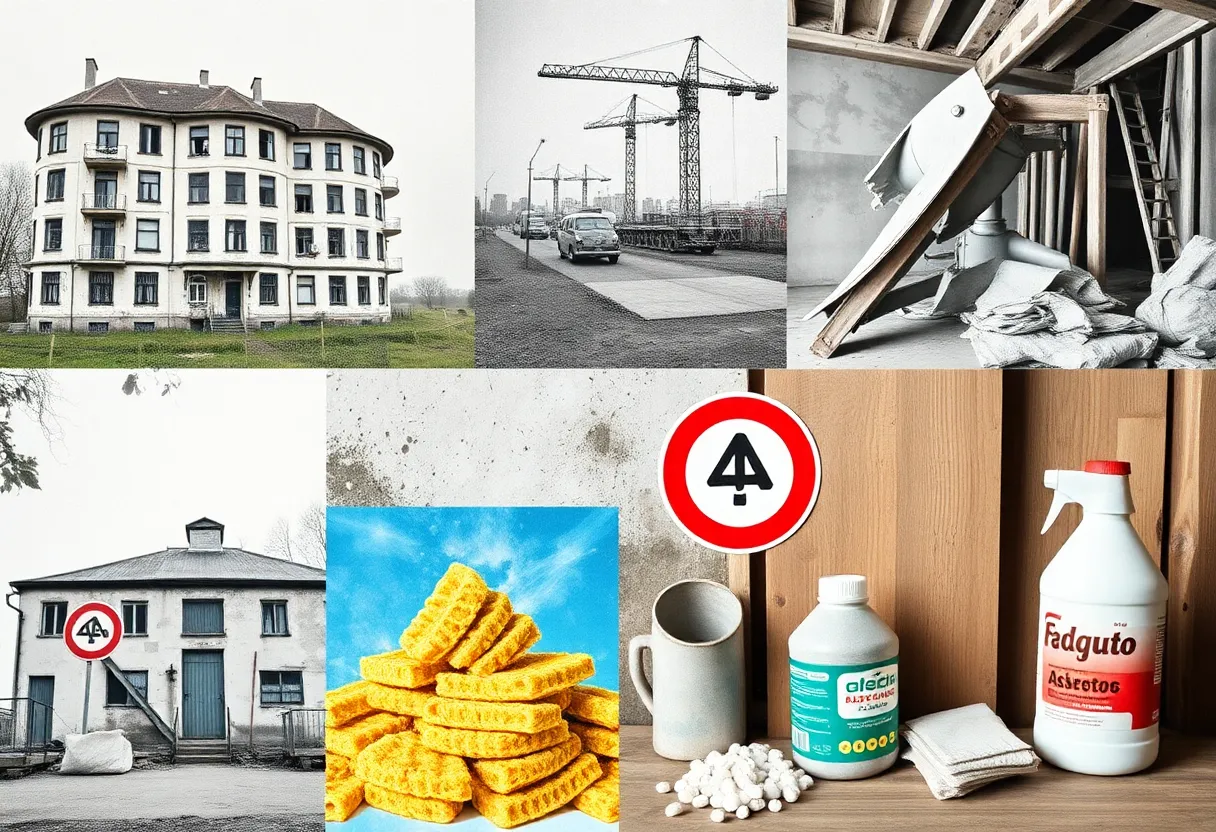News Summary
Asbestos continues to pose a significant threat in Pakistan, where it remains unregulated, leading to serious health issues. A comprehensive ban and public awareness are urgently needed.
The Growing Asbestos Crisis in Pakistan: A Silent Killer
Across Pakistan, the deadly legacy of asbestos continues to pose a significant threat, lurking in schools, hospitals, homes, and workplaces. While over 60 countries have banned the substance due to its lethal implications, Pakistan remains an exception where asbestos is still manufactured, sold, and installed with little to no regulation. This dangerous material, once revered for its strength and affordability, has now revealed its true nature as a well-documented carcinogen, escalating a public health crisis that is both invisible and severely neglected.
The Mechanics of Danger
When disturbed, the microscopic fibers of asbestos become airborne, readily inhaled into the lungs. Unfortunately, these fibers can remain lodged in lung tissue for decades, leading to severe health consequences. The latency period for diseases associated with asbestos exposure can range from 20 to 40 years, meaning individuals often face dire consequences long after their initial exposure.
Those affected may suffer from a variety of incurable diseases, including mesothelioma, an aggressive cancer; asbestosis; and chronic respiratory conditions. The threat is particularly pronounced in regions like Karachi, Lahore, Faisalabad, and Quetta, where many elderly citizens experience unexplained respiratory issues, persistent coughing, and severe chest pain, all potential indicators of asbestos-related diseases.
A Big Infrastructure Push, But at What Cost?
As Pakistan embarks on grand infrastructure projects, including the China-Pakistan Economic Corridor (CPEC) and various urban renewal schemes, there is an urgent need to prioritize public health. Many of the affected regions are urban slums and industrial hubs, where the risk of asbestos exposure dangerously intertwines with everyday life.
Moreover, naturally occurring asbestos deposits in areas near mining zones, such as Gilgit-Baltistan and Khyber Pakhtunkhwa, heighten the risks for local workers and communities. Laborers in shipbreaking yards and automotive workshops frequently handle asbestos-containing materials without adequate protective gear or proper awareness of the threats posed by the material.
The Widespread Ignorance
The general public’s awareness of asbestos and its dangers remains woefully low, leaving many Pakistanis vulnerable to its perils. Contractors employed in construction are often more concerned with the cost-effectiveness and durability of asbestos than with safety, leading to a widespread practice of using this dangerous substance without regard for human health.
Many hospitals and schools still have aging structures built with asbestos-based materials, exposing thousands of students and patients to the potential dangers of this hazardous substance.
Policy Gaps and Call to Action
Despite being a signatory to the Rotterdam Convention, Pakistan has yet to implement a national ban on asbestos, nor has it established an official registry to monitor its use or track related diseases. The importing of asbestos continues unimpeded, with factories actively manufacturing products containing it.
In light of these troubling realities, there is a resounding call for immediate action: a comprehensive ban on asbestos, coupled with the development of a national survey to identify affected buildings, is paramount. Routine health screenings should be mandated for individuals residing in high-risk areas and working in construction, mining, and shipbreaking industries.
The Need for Training and Resources
Medical professionals also require specialized training to recognize asbestos-related diseases in order to improve early diagnosis. Furthermore, personal protective equipment (PPE) must be enforced for workers in industries where exposure is likely, and proper health insurance mechanisms should be developed for at-risk workers, with shared responsibilities between employers and the government.
The potential for a national public awareness campaign about the dangers of asbestos and safer alternatives is critical for protecting future generations. Fund allocation for establishing national registries of asbestos-associated illnesses is crucial for better management of the growing health crisis.
A Pressing Responsibility
Despite the dire public health implications, comprehensive regulations and education regarding asbestos in Pakistan continue to lag behind. The invisible dangers of asbestos require urgent attention to prevent further loss of life in this country. The responsibility for ensuring safety in construction and infrastructure lies not only with policymakers but also with community leaders and citizens. This crisis demands collective action to safeguard the population from the silent scourge of asbestos.
Deeper Dive: News & Info About This Topic
HERE Resources
The Asbestos Crisis: A Silent Killer in Pakistan
The Silent Threat: Mesothelioma and Its Deadly Impact on U.S. Veterans
Cleanup of Former Columbian Enameling Site Reaches Major Milestone
Closure of Asbestos Clinic in Libby, Montana Sparks Health Concerns
Judicial Ruling Shapes Future of Asbestos Liabilities in Bankruptcy
Asbestos Warning Signs Emerge as Demolition Projects Unfold in New Orleans
Asbestos Threat Neutralized at Trumbull Center
Trumbull Center Asbestos Scare Declared Non-Hazardous
Health Risks Loom in St. Louis Following Tornado Damages
Mesothelioma Diagnosis Sparks Alarm Over Asbestos Exposure at Former Data Center
Additional Resources
- The Friday Times: Silent Killer – The Urgent Need to Ban Asbestos
- Wikipedia: Asbestos
- The Diplomat: Asbestos – Singapore’s Toxic Past
- Google Search: Asbestos Health Risk
- Live Mint: FDA Proposes New Testing Rules for Asbestos-free Cosmetics
- Encyclopedia Britannica: Asbestos
- Surviving Mesothelioma: Pakistan May Ban Asbestos to Reduce Mesothelioma
- Google News: Asbestos Ban Pakistan



















